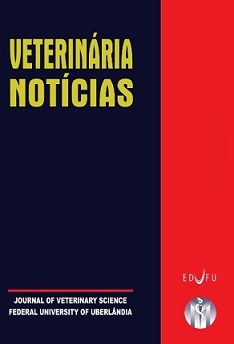Diversity and antimicrobial resistance of Salmonella isolated from swines feces and carcasses
DOI:
https://doi.org/10.14393/VTN-v25n1-2019.2Abstract
The aim of this study was to determine the most frequent Salmonella
serovars in swine feces in the farm, piggery’s waiting slaughterhouse and
after in their carcasses during slaughter, as well as their antimicrobial
resistance profiles. Eighty six strains of Salmonella spp. were used, they
were previously isolated from three different lots in different collections.
The identification of serovars was done by serotyping and the resistance to
antimicrobial agents was determined by disc diffusion. A variety of
serovars was observed, and the 86 strains were serologically identified as:
28 (32.55%) S. Typhimurium, 20 (23.26%) S. Agona, 17 (19.77%) S.
Infantis, 6 (6.98%) S. Panama, and 15 (17.44%) S. Minnesota. The
diversity of serovars indicated that different factors influence the infection
of finishing pigs and the persistence of microorganisms in the carcass after
slaughter of these animals. More than 50% of the isolates were resistant to
nine of the 11 tested antibiotics. The drugs that microorganisms had the
highest percentages of sensitivity were sulphazotrim and norfloxacin,
22.1% and 14%, respectively. S. Typhimurium serovar was the most
isolated, including in the carcasses, and also showed the largest difference
in antimicrobial resistance when compared to other serovars. The profile of
multidrug resistance observed in this study highlights to the necessity of a
judicious observation of antimicrobial resistance in zoonotic foodborne
bacteria.

